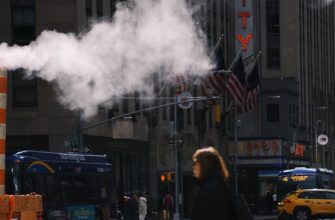- Understanding Urban Air Pollution: Key Contributors and Health Impacts
- Top 10 Simple Changes Every City Dweller Can Make
- Greening Your Space: The Benefits of Indoor Plants
- Promoting Public Transport: A Sustainable Alternative for Commuters
- Community Initiatives: How Neighbors Can Work Together for Cleaner Air
- Advocating for Policy Changes: Engaging with Local Government
Understanding Urban Air Pollution: Key Contributors and Health Impacts
Urban air pollution is a critical issue affecting the health and well-being of city dwellers. Various factors contribute to the degradation of air quality, leading to serious health implications. Understanding these key contributors is essential for implementing effective solutions to improve air quality in urban areas.
- Vehicle Emissions: One of the primary sources of air pollution in cities is emissions from vehicles. Cars, buses, and trucks release harmful pollutants such as nitrogen oxides and particulate matter, significantly impacting respiratory health.
- Industrial Activities: Factories and industrial plants often emit a variety of pollutants into the air. The burning of fossil fuels and manufacturing processes contribute to the release of volatile organic compounds (VOCs) and heavy metals, which pose risks to both human health and the environment.
- Construction and Demolition: Urban development activities, including construction and demolition, generate dust and particulate matter. These airborne particles can exacerbate existing health conditions and contribute to respiratory issues.
- Residential Heating: Many urban areas still rely on fossil fuels for heating purposes. The combustion of these fuels can lead to increased levels of sulfur dioxide and carbon monoxide, further degrading air quality.
The health impacts of urban air pollution are extensive. Exposure to poor air quality is linked to a range of health problems, including:
- Respiratory Diseases: Conditions such as asthma, bronchitis, and chronic obstructive pulmonary disease (COPD) can be aggravated by polluted air.
- Cardiovascular Issues: Studies indicate a correlation between air pollution and heart disease. Pollutants can lead to increased blood pressure and heart attacks.
- Neurological Effects: Emerging research suggests that long-term exposure to air pollution may be associated with cognitive decline and neurological disorders.
- Premature Death: Air pollution is a significant public health risk, contributing to premature mortality rates in urban populations.
Addressing urban air pollution requires a comprehensive understanding of its sources and health impacts. By recognizing these factors, city dwellers can take proactive measures to enhance air quality and protect their health.
Top 10 Simple Changes Every City Dweller Can Make
- Reduce Car Usage: Opt for public transport, cycling, or walking whenever possible. This minimizes emissions and enhances air quality.
- Plant Indoor Plants: Incorporate greenery into living spaces. Certain plants can purify indoor air and contribute to overall air quality.
- Limit Use of Aerosols: Avoid products that release aerosols into the air. Choose eco-friendly alternatives to help reduce pollution levels.
- Use Energy-Efficient Appliances: Select appliances that consume less energy. This not only saves on bills but also lessens the demand for fossil fuels.
- Participate in Local Clean-Up Initiatives: Engage in community efforts to clean parks and streets. This fosters a cleaner environment and improves air quality.
- Support Green Spaces: Advocate for the creation and maintenance of parks and green areas in urban settings. These spaces are crucial for enhancing air quality.
- Be Mindful of Waste Disposal: Properly dispose of waste and recycle materials. Reducing landfill waste can significantly lower air pollution.
- Choose Low-Emission Vehicles: If driving is necessary, consider hybrid or electric vehicles that produce fewer emissions, contributing positively to air quality.
- Educate Others: Share knowledge about air quality issues with friends and family. Raising awareness can lead to collective action for cleaner air.
- Stay Informed: Monitor local air quality reports and adapt activities accordingly. Awareness of pollution levels can help in making healthier choices.
Greening Your Space: The Benefits of Indoor Plants
Indoor plants play a crucial role in enhancing the quality of air in urban environments. By incorporating greenery into living and working spaces, city dwellers can significantly improve their indoor air quality. These plants not only beautify the environment but also contribute to a healthier atmosphere.
- Air Purification: Many indoor plants are known for their ability to filter toxins and pollutants from the air. For instance, plants like Spider Plant and Peace Lily effectively remove harmful substances such as formaldehyde and benzene.
- Humidity Regulation: Indoor plants help maintain optimal humidity levels, which can reduce respiratory issues and dry skin. Plants such as Spathiphyllum naturally release moisture into the air.
- Stress Reduction: The presence of greenery has been linked to lower stress levels. Studies show that indoor plants can create a calming environment, leading to improved mental well-being.
- Increased Productivity: A green workspace enhances focus and productivity. Research indicates that employees working in environments with plants demonstrate greater creativity and efficiency.
- Aesthetic Appeal: Indoor plants add a touch of nature to urban living spaces, making them more inviting and enjoyable. A visually pleasing environment can boost mood and overall satisfaction.
Incorporating indoor plants into urban spaces not only fosters a healthier living environment but also promotes well-being among city residents. The benefits of introducing greenery into homes and offices are profound, making it a simple yet effective strategy for improving air quality in the city.
Promoting Public Transport: A Sustainable Alternative for Commuters
Promoting public transport is a crucial step towards enhancing air quality in urban areas. By shifting the focus to sustainable commuting options, cities can significantly reduce harmful emissions and improve the overall environment. Public transport systems, such as buses, trams, and subways, offer an efficient alternative to individual car usage, which contributes to air pollution and traffic congestion.
Utilizing public transport not only decreases the number of vehicles on the road but also fosters a sense of community among commuters. When more individuals choose to ride buses or trains, the reliance on personal cars diminishes, leading to fewer greenhouse gas emissions and better air quality.
- Reduced Emissions: Public transport generates significantly lower emissions per passenger compared to private vehicles.
- Cost-Effective: Using public transport can save money on fuel, maintenance, and parking fees associated with personal vehicles.
- Efficient Land Use: Public transport encourages higher density development, which can lead to more green spaces and less urban sprawl.
- Improved Accessibility: Enhanced public transport systems make it easier for residents to access essential services and job opportunities.
- Health Benefits: With fewer cars on the road, air quality improves, leading to better respiratory health for the entire community.
Investing in public transport infrastructure is essential for cities aiming to improve air quality. This includes expanding networks, increasing service frequency, and ensuring affordability. By prioritizing sustainable commuting options, city planners can create a cleaner, healthier urban environment for all residents.
Encouraging the use of public transport also involves community outreach and education, highlighting the environmental benefits and cost savings associated with this mode of travel. Cities can foster a culture of public transit use by promoting initiatives, such as subsidized fares or rewards programs for regular commuters. Through these efforts, public transport can become a viable and attractive option for more city dwellers.
Community Initiatives: How Neighbors Can Work Together for Cleaner Air
Community initiatives play a vital role in enhancing air quality in urban environments. By fostering collaboration among neighbors, cities can create cleaner air and a healthier atmosphere. Engaging in local projects not only improves air quality but also strengthens community bonds.
- Organize Clean-up Days: Mobilizing residents for regular clean-up events can significantly reduce litter and pollutants in local parks and streets, contributing to better air quality.
- Community Gardening: Establishing community gardens allows residents to plant trees and shrubs, which naturally filter air pollutants and provide oxygen, leading to a fresher environment.
- Promote Eco-friendly Transportation: Encouraging the use of bicycles, carpooling, and public transport reduces vehicle emissions, greatly impacting urban air quality.
- Awareness Campaigns: Initiating educational programs and workshops can inform residents about the importance of clean air and practical steps to reduce pollution.
- Advocate for Green Spaces: Working together to create and maintain parks and green areas helps absorb carbon dioxide and other pollutants while enhancing the overall aesthetic of the community.
Through these collaborative efforts, communities can effectively tackle air pollution challenges. By working together, neighbors can implement strategies that lead to cleaner air and a healthier city for everyone.
Advocating for Policy Changes: Engaging with Local Government
Engaging with local government is crucial for advocating effective policy changes that can significantly enhance air quality in urban areas. City dwellers play a vital role in this process, as their voices can influence decision-makers to prioritize air quality improvement initiatives. By actively participating in local governance, residents can push for policies that promote cleaner air and healthier living conditions.
- Attend city council meetings to discuss air quality issues and present potential solutions.
- Form or join community groups focused on environmental advocacy to amplify efforts in addressing air pollution.
- Collaborate with local organizations that specialize in environmental health to gather data and resources.
- Initiate campaigns that raise awareness about air quality and encourage residents to voice their concerns to local officials.
- Utilize social media platforms to create dialogues around air quality policies and mobilize community support.
Proposing specific measures, such as implementing stricter emissions regulations for vehicles and industries, can lead to significant improvements in air quality. Additionally, advocating for the development of green spaces and promoting the use of public transportation can contribute to reducing pollution levels. Engaging in discussions about air quality regulations creates an opportunity for citizens to express their needs and expectations, ensuring that policymakers prioritize public health.
Ultimately, a collective effort from residents to engage with local government can lead to the enactment of policies that effectively tackle air pollution. By fostering a strong community voice and actively participating in the decision-making process, city dwellers can help create a cleaner, healthier environment for all.








